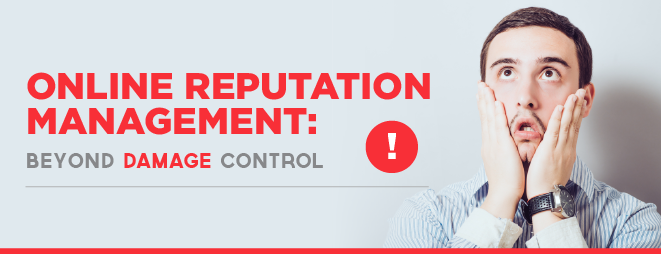Online Reputation Management: Beyond Damage Control
Most people don't think about their online reputation until it's too late. Here are some tips for damage control - and making sure you're not in a position to need them in the first place.
Most people don't think about their online reputation until it's too late. Here are some tips for damage control - and making sure you're not in a position to need them in the first place.
Most people don’t give online reputation management a second thought until it’s too late and they are forced into a disagreeable, and potentially costly, situation. It’s easy for individuals and businesses to take their reputations for granted when there isn’t a sleuth of negativity plastered all over the Internet. Until the day they find their bottom line being negatively impacted by what’s said about them online. Then all of a sudden, online reputation becomes of paramount importance.
So how do you recover from an online reputation crisis and most importantly, how do you prevent yourself from having one in the first place?

If there are negative posts about you on the internet, one of the first things you have to do is start flooding the same SERP – the exact same keywords – with positive mentions.
Finally, you’ll need to track the results of your efforts. Whether you use a tool like AuthorityLabs to track your rankings or a social media measurement tool like TrueSocialMetrics, the key at this stage is to track the effectiveness of your campaign. What are the rankings of the negative mentions? What new mentions are you seeing on social media? Which ones need a quick boost to rank even better?
We all know there will always be a jaded customer who will love the attention of complaining about you or your business. Keeping a pristine reputation is practically impossible. What you can do is preemptively flood the search engines with positive mentions of your brand or personal name so that new, negative mentions won’t see the light of day.
If you haven’t already, make sure you’ve claimed your name on every possible social media site and/or profile. If your name is already taken, find the most viable variation. Make sure that the profiles have accurate information.
There are sites – including Business2Community, Medium.com, BuzzFeed, and LinkedIn – where anyone can create and promote their own content. Start contributing regularly to sites like that, as well as any other relevant industry sites that welcome your contributions. Every time you write for other authoritative domains, link to your other articles, as well as your social profiles. The idea is to flood the internet with mentions of your name or brand so that the SERPs become saturated with positive, authoritative content.
Google gives high priority rankings to results from YouTube and Google Images. Use those sites to create and share images using your name or company name. Create a Flickr account and upload your photos. Create a presentation and upload it to SlideShare. Research other opportunities so you can take over the image and video results, as well.
When it comes to reputation management, get ahead of the curve. Don’t find yourself in a PR crisis, suffering the results of negative reputation that can impact you on so many levels. Add reputation management to your digital marketing repertoire and prepare yourself and your brand for a future where online reputation is closely connected with your bottom line.